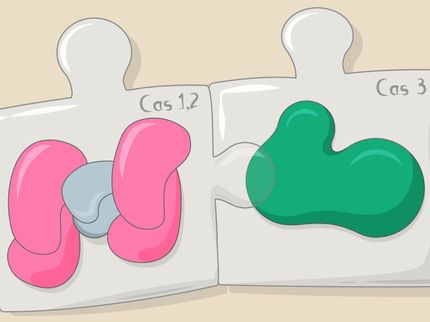In race to predict protein structure, computers take lead
A flood of data is emerging from genome research, including sequence data on proteins. To help science keep pace with this flow of knowledge, computer scientists, biophysicists and biochemists across the world have been developing advanced technologies to help derive accurately and quickly the three-dimensional structure of proteins from this data.
At a competition that has been called the "Olympic games of protein structure prediction," two teams of computer scientists at the University of Missouri were ranked among the best in the world. Their new, faster and more accurate protein structure prediction servers will help scientists better determine the function of proteins in cells.
"Given the importance of protein structure to all biological processes, the ability to accurately predict protein structure from sequence data is one of the most challenging problems in biology today," said Jianlin Cheng, assistant professor of computer science in the MU College of Engineering. It also is a problem that can be solved with simulations running on computer servers. Now, research groups worldwide are in a race to see who can develop the best server.
Critical Assessment of Techniques for Protein Structure Prediction (CASP) is a competition that pits computer modeling designed by groups from around the world to see whose method comes closest to structures determined in the laboratory. The goal is to provide a rigorous, peer-reviewed test of the accuracy of current computational protein structure prediction methods. Results from the most recent competition, CASP8, were recently announced.
Among the prediction methods ranked best in the world in both template-free and template-based categories were MULTICOM and MUFOLD, both designed by teams of computer scientists at MU. The two prediction categories differ by whether the unsolved protein sequence is generated based on known structures or deduced solely from sequence data. Both teams predicted the folding of 128 proteins from a number of different species, including those from bacteria, viruses, and both single- and multi-celled organisms.
Most read news
Topics
Organizations
Other news from the department science

Get the life science industry in your inbox
By submitting this form you agree that LUMITOS AG will send you the newsletter(s) selected above by email. Your data will not be passed on to third parties. Your data will be stored and processed in accordance with our data protection regulations. LUMITOS may contact you by email for the purpose of advertising or market and opinion surveys. You can revoke your consent at any time without giving reasons to LUMITOS AG, Ernst-Augustin-Str. 2, 12489 Berlin, Germany or by e-mail at revoke@lumitos.com with effect for the future. In addition, each email contains a link to unsubscribe from the corresponding newsletter.


















































